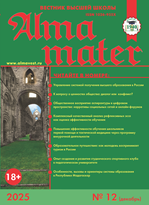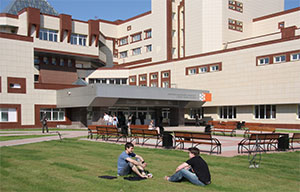Elena A. Shatalova, Cand. Sc. (Pedagogy), Docent, Associate Professor of Department of General and Social Pedagogy, Altay State Pedagogical University, Barnaul city, e-mail: shatel84@inbox.ru
Ilya S. Kolganov, Postgraduate student of Department of Social Psychology and Pedagogical Education of the Altai State University, Barnaul city, e-mail: ilyapumping@mail.ru
This article examines the concept of ‘psychoactive substances’ and their impact on the lives of adolescents, presents an analysis of the causes of the onset of the use of psychoactive substances by adolescents in educational institutions. The impressive scale of the problem under consideration poses a special task for specialists of educational institutions — the prevention of the use of psychoactive substances among students, since school is an environment for the development of a successful and healthy student personality. In the activities of specialists of a general education institution, the main emphasis is placed on preventive programs, the essence of which is to form a culture of a healthy lifestyle and, as a result, a negative attitude towards the use of psychoactive substances.
To assess the effectiveness of interactive approaches in the prevention of substance abuse in schools in Barnaul, Altai Territory, we have developed and conducted a quasi-experimental study focused on the introduction and evaluation of interactive prevention methods in educational institutions. The study involved students aged 14 to 18 years, as part of the control and experimental groups. A psychological and pedagogical program for the prevention of the use of psychoactive substances ‘Interactive ways’ is proposed. The study was organized during the academic year, with an assessment of effectiveness upon completion.
Keywords: teenager, psychoactive substances, addiction, psychology, program, rehabilitation, prevention, school, teacher, parents
References
1. Berezina, T.N. Psychological aspects of drug addiction prevention among adolescents in an educational environment. Vestnik of Psychotherapy. 2018. No. 1 (61). P. 85–94.
2. Borisova, O.V., Chuprov, L.F. The influence of family education on the prevention of deviant behavior in adolescents. Psychological science and Education. 2018. Vol. 23. No. 5. P. 58–66.
3. Report on the drug situation in the Altai Territory for 2022 / Administration of the Governor and the Government of the Altai Territory. Barnaul, 2023. 74 p.
4. Zmanovskaya, E.V. Deviant behavior of adolescents: Prevention and correction. Moscow: Akademiia, 2017. 234 p.
5. Ivanova, A.E. Mikhailova, Yu.B. Drug addiction prevention programs in schools: methods and results. Psychology of Education. 2017. No. 8. P. 82–95.
6. Koshkina, E.A. Evaluation of the effectiveness of programs for the prevention of substance abuse among young people in the educational environment of Russia. Narcology. 2020. Vol. 19. No. 2. P. 10–21.
7. Ministry of Health of the Russian Federation: ofic. website. Moscow. URL: https//minzdrav.goc.ru (accessed on: 01.08.2024).
8. Petrova, N.V., Grigorieva, I.M. Social work with adolescents in school education. Social Pedagogy. 2019. No. 2. P. 24–33.
9. Smirnova, M.S. Rakova, V.V. Interactive methods in the prevention of psychoactive substances among adolescents. Journal of Practical Psychology and Psychoanalysis. 2020. No. 3. P. 78–87.
10. Tetenova, E.Yu. Modern approaches to the prevention of surfactant use among students: experience and prospects. Journal of Narcology. 2019. No. 4. P. 112–120.
11. Shatalova, E.A., Sviridov, A.N. Socio-pedagogical technologies for the prevention of the use of psychoactive substances among students [Electronic resource]. Concept. 2014. No. S23. P. 36–40.rences











.png)






